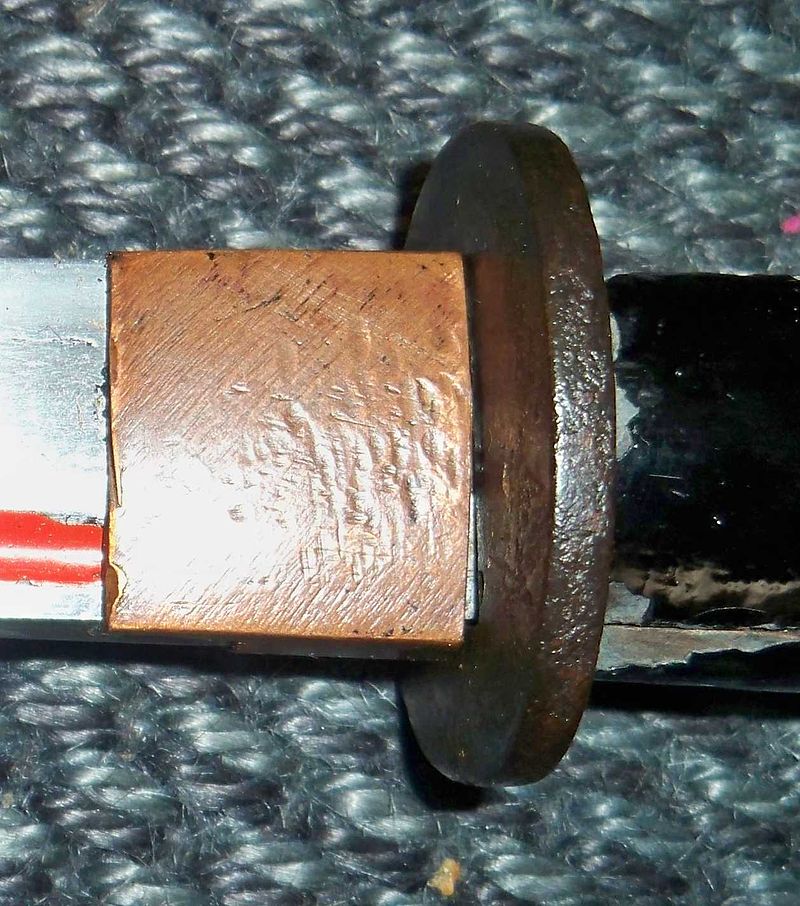Your Cart is Empty


Traditional Japanese swords are typically characterized by their meticulous construction and attention to detail, as well as their high-carbon steel and curved blades. They are often produced using a few basic components, including a forged blade, hand guard (tsuba), hilt (tsuka) and various ornaments (menuki). Additionally, many traditional Japanese swords feature a component known as a habaki. So, what benefits does the habaki offer and why is it included in traditional Japanese swords?
Overview of the Habaki
As shown in the photo to the left, the habaki is a metallic wrapping that's found at the base of a Japanese sword. Measuring just a few inches tall, it sits atop the tsuba where it doesn't interfere with the sword's ability to cut.
The habiki is normally made of steel or iron, though others have been made of bronze, copper and even gold. Most swordsmiths add them after the blade has already been finished by wrapping and hammering the metal around the base of the blade.
Swordsmiths have included the habaki on many traditional Japanese swords, such as the katana, tachi, kodachi, odachi, wakizashi, uchigatana and others. Additionally, it's found in swords produced in other regions of the world, including Ancient European swords.
Benefits of the Habaki
Some people assume the habaki was used strictly for aesthetic purposes, but this isn't necessarily true. While it does offer a certain "stylish" appearance, the habaki offers some very real functional benefits as well.
One of the main reasons why swordsmiths began using the habaki on their swords was to secure the tsuba. Without a habaki, the tsuba had a tendency to slip out of place; thus, increasing the risk of accidental self-injury. A hakabi, however, prevents the tsuba from rising up while subsequently reducing the risk of self-injury to the samurai warrior wielding the sword.
Furthermore, the habaki allowed samurai warriors to draw their sword more quickly. The katana, for instance, is normally drawn by grabbing the scabbard and pressing the sword's tsuba at the top. As you may already know, the katana is unique in the sense that it's traditionally worn with the cutting edge of the blade facing up. Therefore, samurai warriors may inadvertently cut themselves when attempting to draw it. The habaki helps to protect against self-cuts by allowing the samurai warrior to slide the blade out of the scabbard just enough to perform a fast, safe draw.